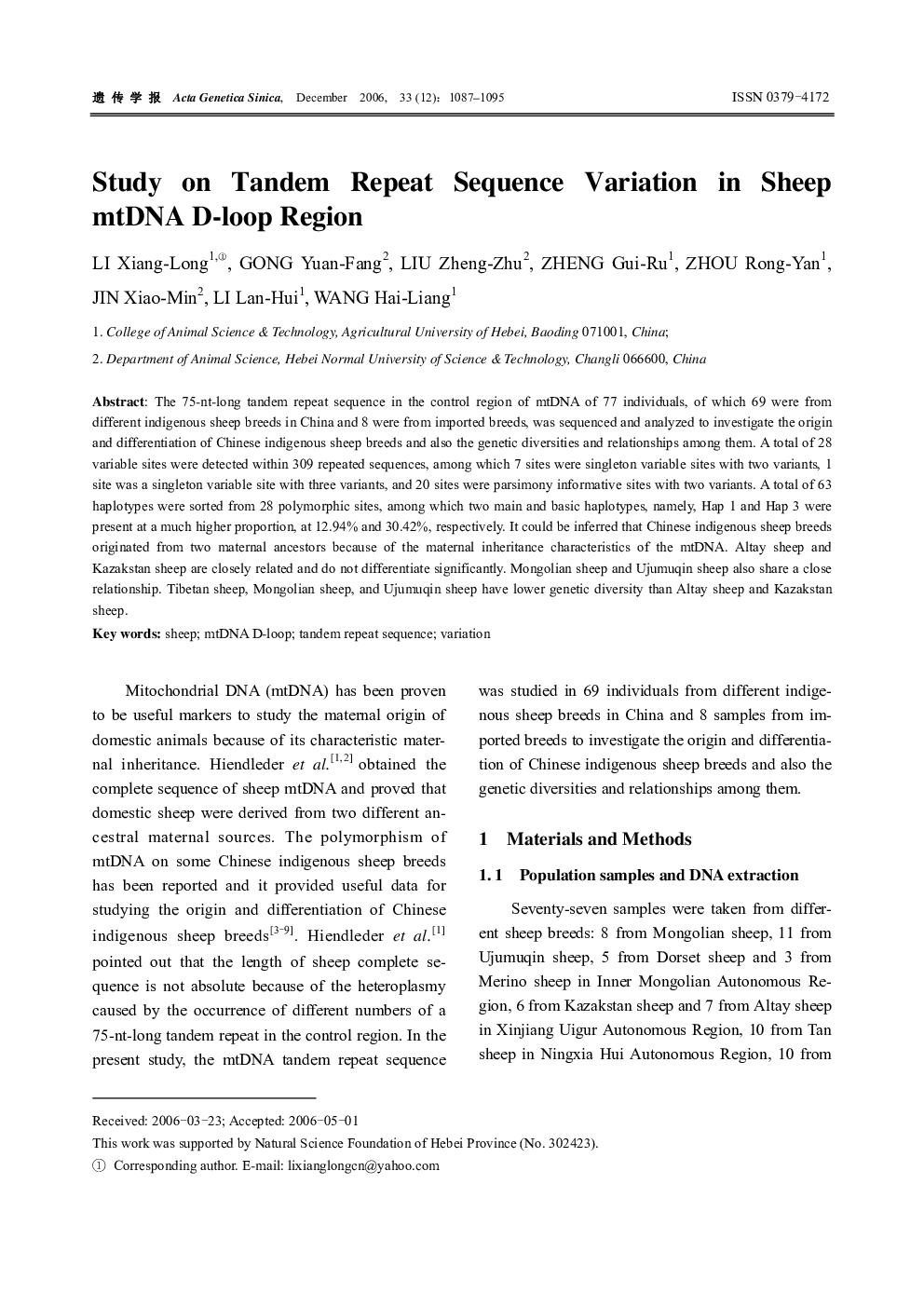| Article ID | Journal | Published Year | Pages | File Type |
|---|---|---|---|---|
| 2811175 | Acta Genetica Sinica | 2006 | 9 Pages |
The 75-nt-long tandem repeat sequence in the control region of mtDNA of 77 individuals, of which 69 were from different indigenous sheep breeds in China and 8 were from imported breeds, was sequenced and analyzed to investigate the origin and differentiation of Chinese indigenous sheep breeds and also the genetic diversities and relationships among them. A total of 28 variable sites were detected within 309 repeated sequences, among which 7 sites were singleton variable sites with two variants, 1 site was a singleton variable site with three variants, and 20 sites were parsimony informative sites with two variants. A total of 63 haplotypes were sorted from 28 polymorphic sites, among which two main and basic haplotypes, namely, Hap 1 and Hap 3 were present at a much higher proportion, at 12.94% and 30.42%, respectively. It could be inferred that Chinese indigenous sheep breeds originated from two maternal ancestors because of the maternal inheritance characteristics of the mtDNA. Altay sheep and Kazakstan sheep are closely related and do not differentiate significantly. Mongolian sheep and Ujumuqin sheep also share a close relationship. Tibetan sheep, Mongolian sheep, and Ujumuqin sheep have lower genetic diversity than Altay sheep and Kazakstan sheep.
